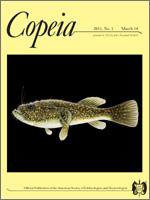Gymnotus tiquie, new species, is described from the Rio Tiquié, a tributary of the Uaupés (Vaupés) in the upper Negro basin, Amazonas, Brazil. The new species was collected in non-floodplain (terra firme) streams, where it occurs sympatrically and syntopically with two geographically widespread congeners, the type species of the genus, G. carapo, and G. coropinae. The new species is diagnosed by a unique combination of morphometric, meristic, and osteological traits, and by a characteristic color pattern in which the dark oblique pigment bands, diverse in shape and design, are divided into band-pairs along the length of the body, in which the band-pairs are often recurved (dorsally concave), more variable, and often reticulated in the abdominal region, and in which the pale inter-bands meet at the dorsal mid-line along most of the length of the body. Gymnotus tiquie is a member of the G. pantherinus species group, with which it shares the presence of one (vs. two) pore in the dorsolateral portion of the preopercle (except in G. pantanal and G. anguillaris), needle-shaped (vs. conical or arrowhead-shaped) teeth on the dentary and premaxilla, and a slender body (BD 5.6–10.6% HL vs. deep 8.7–13.5%, except G. chaviro, G. curupira, G. varzea, G. chimarrao, G. maculosus, G. henni, and G. inaequilabiatus that also have a slender body). Gymnotus tiquie is most similar in overall appearance to G. cataniapo of the upper Orinoco. These two species share three unique features within the G. pantherinus group: dark band-pairs with wavy irregular margins along the length of the body, a long body cavity with 45 or more pre-caudal vertebrae, and a darkly pigmented membrane in the caudal region of the anal fin.
Gymnotus tiquie, nova espécie, é descrita para o rio Tiquié, um afluente do rio Uaupés (Vaupés), bacia do alto rio Negro, Amazonas, Brasil. A nova espécie foi coletada em igarapés de terra firme, onde ela ocorre simpatricamente e sintopicamente com dois congêneres geograficamente amplamente distribuídos, a espécie-tipo do gênero, G. carapo, e G. coropinae. A nova espécie é diagnosticada por uma combinação única de caracteres morfométricos, meristicos e osteológicos, e por um padrão de colorido característico no qual as faixas oblíquas escuras, variadas em forma, são divididas em pares de bandas ao longo do corpo, nos quais os pares de bandas são frequentemente recurvados (côncavos dorsalmente), mais variáveis, e frequentemente reticulados na região abdominal, e nos quais as faixas intermediárias pálidas encontram-se na região dorsal média ao longo da maior parte do comprimento do corpo. Gymnotus tiquie é um membro do grupo de espécies G. pantherinus, com o qual compartilha a presença de um (vs. dois) poros na porção dorsolateral do pré-opérculo, dentes do dentário e pré-maxila em forma de agulha (vs. dentes do dentário e pré-maxila cônicos ou em forma de ponta de flecha) e um corpo alongado (altura do corpo 5.6–10.6% no comprimento da cabeça, vs. altura do corpo 8.7–13.5% no comprimento da cabeça exceto em G. chaviro, G. curupira, G. var





